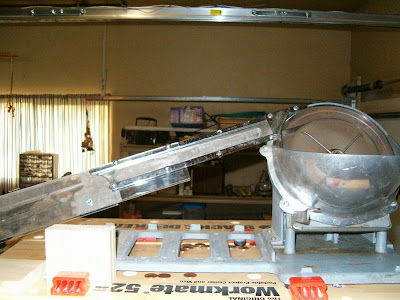Perhaps you have heard of Gresham's law? It is usually phrased like this, "Bad money drives out good" or "Bad money drives out good if their exchange rate is set by law".
An example of this occurred in 1965, when the United States minted quarters made of cupro-nickel when previously they were made of 90% silver. The 1964 and previous quarters immediately were saved by their owners, while the new quarters circulated in daily commerce. This happens because the face value of the 2 coins (the bad and the good) was the same, while it was obvious to everyone that the silver quarter was worth much more. Thus, the bad (cupro-nickel) quarter with the same legal tender, face value drove out the good (silver) quarter.
Of course, this all happened before I was born, and I am sure it happened very rapidly, as soon as the government announced the debasement of the currency. By the way, Battelle proudly claims ownership for the idea of the 1965 "sandwich" coin. (That would look great on your resume if you were applying to replace Robert Mugabe as dictator of Zimbabwe.) I think Battelle was at least 2,000 years late. Debasement has been around a very long time - think Romans.
Nonetheless, our own dear FED has continued its inflation at a much more humble rate than Zimbabwe. Don't believe me? Check the government's own CPI calculator here. One cent in 1965 would buy what 7 cents will buy in 2010.
The debasement of the coinage continued in 1982 when copper-clad zinc pennies were introduced and copper pennies were phased out. Then, however, the difference between the face value of the penny and the metal value of the coin was quite small. But wait, the FED is ever relentless with its inflation and the difference in the face value and the metal value grew to about 2 to 1 in 2006. However, because of this small difference and the small absolute value of a penny, I suspect that Gresham's Law was slow to take affect. (This really means that people didn't think that it was worth their time to sort the pennies. Compare the current 3-to-1 ratio of copper and copper-clad pennies to the 21-to-1 ratio of the silver quarters and cupro-nickel quarters.)
So, I did what any engineer who sees an opportunity would do. I built a machine that would sort the pennies by the thousands at a time.
First, I bought 20 or 30 dollars worth of pennies from a local credit union and asked my kids to help sort them into 3 piles; pre-1982, 1982, and post 1982. The "1982" category was necessary because the US Mint issued both types of penny that year. From that exercise, I concluded that about 25% of the pennies in circulation were of the copper variety.
Next, I studied what physical property would most differentiate the two types of penny. I tried an eddy current sensing technique with a high end oscilloscope and the help of my friend John, an EE. But I ultimately decided that the resistivity (reciprocal of conductivity) of zinc and copper would provide the greatest discriminator.
Copper has a resistivity of 1.68 x10-8 ohms*meter, while zinc's resistivity is 5.90 x10-8 ohms*meter. This is why the wiring in your house is made of copper and not of zinc. This also means that when a copper penny passes through a magnetic field, a larger current will be induced in it and a correspondingly larger opposing force will resist the passing of the copper penny as compared with the mostly zinc penny.
Without further boring you with the developmental details, I will show you photos the working prototype.
 |
| Modified coin sorter and bin that sends the pennies down the track |
 |
| Ten pairs of neodymium magnets at the end of the track |
 |
| Pennies come off the end of the track at the left and land in the pink or white containers |
 |
| Details of the transition from the coin sorter to the track |
 |
| Clear acrylic track |
Oh, did I mention that the pennies I bought for one cent now have a metal value of three cents? That's better than any stock, bond, or mutual fund I ever bought, by far! I just need to decide when to take the profit before the table collapses.

No comments:
Post a Comment